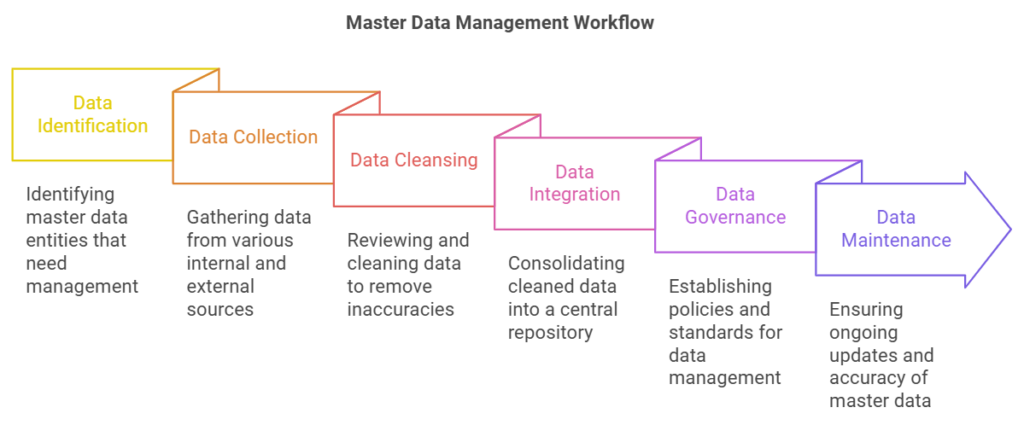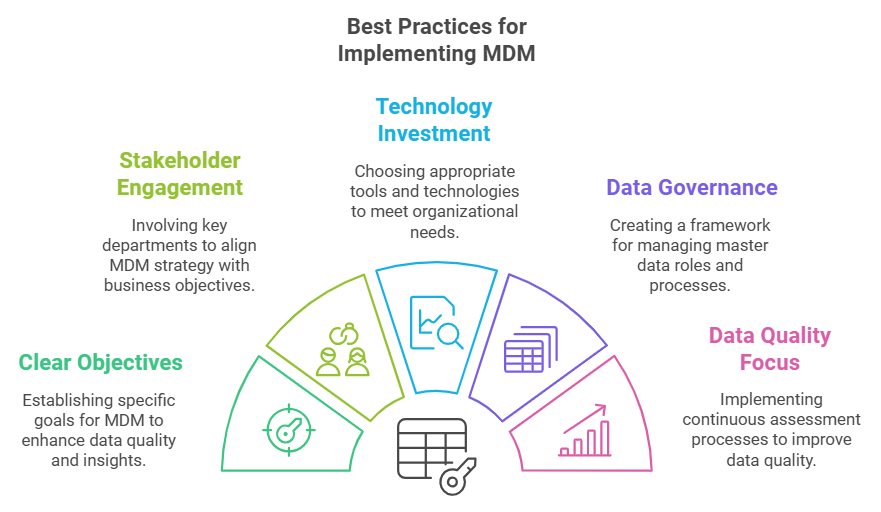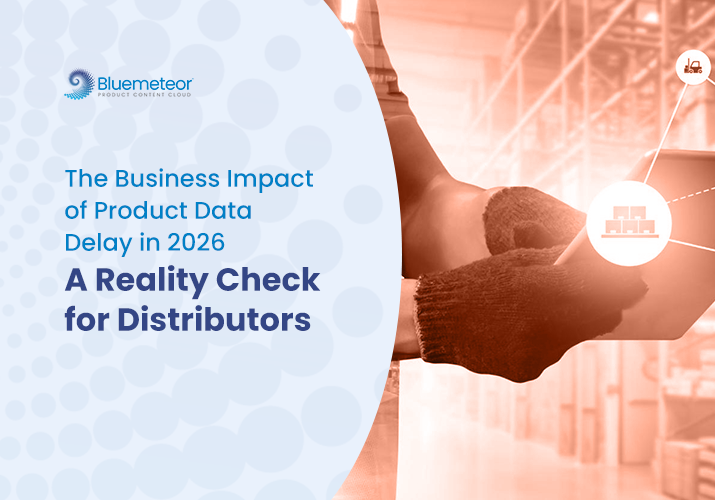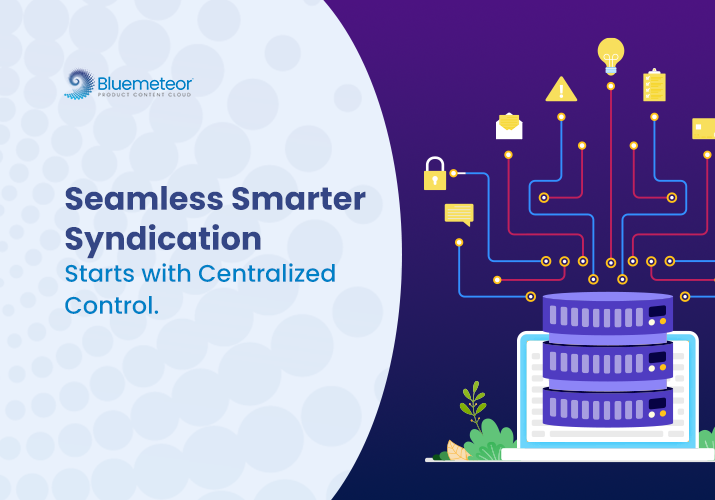What’s Master Data Management and Why It Matters for Organizations: A Deep Dive Guide

In today’s rapidly evolving digital landscape, organizations generate and rely on vast amounts of data to drive business decisions, optimize operations, and enhance customer experiences. However, the sheer volume and complexity of this data can lead to inconsistencies, inaccuracies, and redundancies. As a result, the quality and reliability of the information that businesses depend on are often undermined. This is precisely why Master Data Management (MDM) plays a crucial role.
What is Master Data Management (MDM)?
Master Data Management (MDM) refers to a set of processes, tools, and governance policies aimed at ensuring the uniformity, accuracy, stewardship, semantic consistency, and accountability of an organization’s official shared master data assets. The primary objective of MDM is to create a single, reliable source of master data that can be used across an organization to streamline operations and facilitate strategic decision-making.
Consider a global retail company that sells products through various channels, including brick-and-mortar stores, e-commerce platforms, and third-party marketplaces. Each of these channels collects data independently, leading to discrepancies and inconsistencies in product information, customer records, and supplier details.
Master Data vs. Transactional Data:
Master Data refers to the core data entities essential to an organization’s operations. These entities are relatively stable and represent the key business objects around which transactions revolve.
Examples: Customer information (e.g., name, contact details), product details (e.g., SKU, description, price), supplier information, employee records, and financial accounts.
Transactional Data:
Transactional Data, on the other hand, records the interactions or events that occur within the business processes of an organization. These data are generated as a result of transactions and operations.
Examples: Sales orders, purchase orders, invoices, payments, shipments, inventory movements, and other transactional activities.

Key Components of Master Data Management
Master Data Management (MDM) involves several key components that are essential for managing and integrating master data across an organization:
- Data Governance: This component focuses on establishing policies, standards, and procedures for managing master data. It ensures that data is accurate, consistent, and secure throughout its lifecycle.
- Data Quality Management: This involves processes and tools to improve and maintain the quality of master data. It includes data cleansing, validation, enrichment, and monitoring to ensure data accuracy and completeness.
- Data Integration: This component deals with the integration of master data from various sources and systems within an organization. It aims to create a unified view of data across different applications and departments.
- Data Storage: MDM systems typically include repositories or databases where master data is stored centrally. This allows for easy access, retrieval, and management of data across the organization.
- Data Synchronization: This involves ensuring that master data is synchronized and consistent across all systems and applications that use it. It prevents discrepancies and ensures that updates made to master data are propagated throughout the organization in real-time or as scheduled.
- Data Security and Privacy: MDM systems include measures to ensure that master data is protected from unauthorized access, manipulation, or loss. It also addresses compliance with data privacy regulations and standards.
- Metadata Management: Metadata (data about data) management is crucial in MDM to provide context and understanding of master data. It includes defining and managing metadata attributes, relationships, and hierarchies.
These components collectively support the goals of MDM, which include improving data quality, ensuring data consistency across systems, enhancing decision-making capabilities, and enabling efficient business operations.

Why do businesses need Master Data Management (MDM)?
Master Data Management (MDM) is crucial for organizations across various industries due to several key reasons:
Data Consistency and Accuracy:
MDM ensures that master data, such as customer information, product details, and financial data, is consistent and accurate across all systems and departments. This consistency eliminates discrepancies that can arise from using multiple sources of data, ensuring that stakeholders make decisions based on reliable information.
A global retailer uses MDM to maintain consistent product information across its online store, physical stores, and supply chain systems. This ensures that product details, pricing, and availability are accurate and up-to-date, providing a seamless customer experience and reducing errors in inventory management.
Improved Decision-Making:
By providing a single, authoritative source of truth for master data, MDM enables better decision-making. With consistent and reliable data, executives and managers can analyze trends, identify opportunities, and mitigate risks more effectively.
Operational Efficiency:
MDM streamlines business processes by reducing data duplication, improving data quality, and facilitating data integration across systems. This efficiency leads to reduced operational costs, faster response times, and improved productivity.
Example: A healthcare provider implements MDM to unify patient records across multiple clinics and hospitals. This integration ensures that medical staff have access to complete and accurate patient histories, leading to faster diagnoses, improved treatment outcomes, and enhanced patient care.
Compliance and Risk Management:
MDM helps organizations comply with regulatory requirements by ensuring data integrity, privacy, and security. By centralizing and controlling access to sensitive data, MDM reduces the risk of data breaches and non-compliance penalties.
Example: A pharmaceutical company uses MDM to manage regulatory compliance data related to product approvals, safety standards, and manufacturing processes. This ensures that the company meets regulatory requirements in different markets and maintains a reputation for quality and compliance.
Customer Experience and Loyalty:
MDM enables organizations to deliver consistent and personalized experiences to customers. By maintaining accurate customer profiles and preferences, businesses can tailor marketing campaigns, product recommendations, and customer service interactions, fostering customer satisfaction and loyalty.
Example: An e-commerce platform uses MDM to consolidate customer data from online purchases, social media interactions, and customer service inquiries. This unified view enables personalized marketing offers and customer service responses based on individual preferences and behaviors, enhancing overall customer experience.
Common Challenges Faced in Master Data Management Projects:
- Data Quality Issues and Legacy System Integration:
- Explanation: MDM projects often encounter challenges with data quality, including inconsistencies, inaccuracies, and incompleteness in master data. Legacy systems, which may have outdated or incompatible data formats, pose integration challenges when consolidating data into a centralized MDM system.
- Impact: Poor data quality can lead to incorrect business decisions, operational inefficiencies, and compliance issues.
- Organizational Resistance and Change Management:
- Explanation: Implementing MDM requires organizational change, which can face resistance from stakeholders accustomed to existing processes or skeptical about new technologies. Resistance may arise due to concerns about job roles, perceived threats to authority, or fear of change.
- Impact: Resistance can delay project timelines, hinder adoption of new MDM processes, and affect overall project success.

Best Practices for Overcoming MDM Challenges:
- Stakeholder Engagement and Communication Strategies:
- Explanation: Engaging stakeholders early and effectively communicating the benefits of MDM can mitigate resistance. Involving key stakeholders in decision-making, addressing concerns, and demonstrating how MDM enhances their roles can foster support and collaboration.
- Impact: Improved stakeholder buy-in leads to smoother project implementation, faster decision-making, and better alignment with organizational goals.
- Leveraging Data Governance and Quality Assurance:
- Explanation: Establishing robust data governance frameworks ensures that policies, standards, and processes are in place to maintain data integrity and quality throughout the MDM lifecycle. Quality assurance measures, such as data cleansing, validation, and monitoring, help identify and rectify data quality issues proactively.
- Impact: Effective data governance enhances data trustworthiness, compliance with regulatory requirements, and supports reliable decision-making based on accurate data.
In conclusion, Master Data Management is essential for organizations to harness the full potential of their data, ensuring its consistency, accuracy, and reliability across all business processes. By implementing MDM, companies can enhance operational efficiency, improve customer experiences, and make data-driven decisions with confidence.




